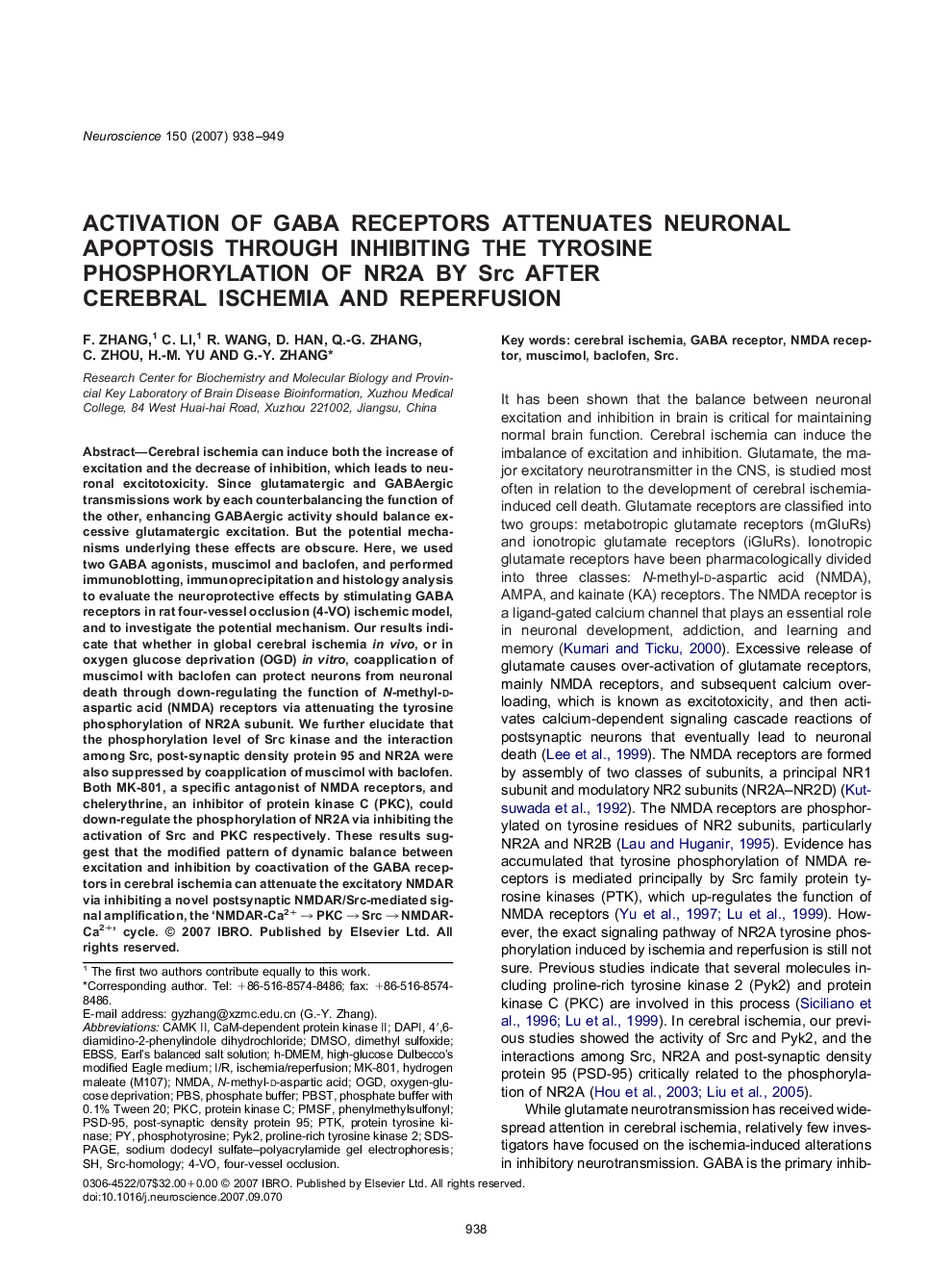| Article ID | Journal | Published Year | Pages | File Type |
|---|---|---|---|---|
| 4341029 | Neuroscience | 2007 | 12 Pages |
Abstract
Cerebral ischemia can induce both the increase of excitation and the decrease of inhibition, which leads to neuronal excitotoxicity. Since glutamatergic and GABAergic transmissions work by each counterbalancing the function of the other, enhancing GABAergic activity should balance excessive glutamatergic excitation. But the potential mechanisms underlying these effects are obscure. Here, we used two GABA agonists, muscimol and baclofen, and performed immunoblotting, immunoprecipitation and histology analysis to evaluate the neuroprotective effects by stimulating GABA receptors in rat four-vessel occlusion (4-VO) ischemic model, and to investigate the potential mechanism. Our results indicate that whether in global cerebral ischemia in vivo, or in oxygen glucose deprivation (OGD) in vitro, coapplication of muscimol with baclofen can protect neurons from neuronal death through down-regulating the function of N-methyl-d-aspartic acid (NMDA) receptors via attenuating the tyrosine phosphorylation of NR2A subunit. We further elucidate that the phosphorylation level of Src kinase and the interaction among Src, post-synaptic density protein 95 and NR2A were also suppressed by coapplication of muscimol with baclofen. Both MK-801, a specific antagonist of NMDA receptors, and chelerythrine, an inhibitor of protein kinase C (PKC), could down-regulate the phosphorylation of NR2A via inhibiting the activation of Src and PKC respectively. These results suggest that the modified pattern of dynamic balance between excitation and inhibition by coactivation of the GABA receptors in cerebral ischemia can attenuate the excitatory NMDAR via inhibiting a novel postsynaptic NMDAR/Src-mediated signal amplification, the 'NMDAR-Ca2+ â PKC â Src â NMDAR-Ca2+' cycle.
Keywords
PBSPKCPYK2N-methyl-d-aspartic acidEBSSMK-801PSD-95NMDAOGDPMSFDAPISRCPBSTCAMK IIPTKphenylmethylsulfonyl4′,6-diamidino-2-phenylindole dihydrochloride4-VODMSOI/RNMDA receptorsodium dodecyl sulfate–polyacrylamide gel electrophoresisSDS-PAGEfour-vessel occlusionischemia/reperfusionCerebral ischemiaphosphate bufferBaclofenproline-rich tyrosine kinase 2Dimethyl sulfoxidephosphotyrosineOxygen-glucose deprivationmuscimolSrc-homologyProtein tyrosine kinasepost-synaptic density protein 95Protein kinase CGABA receptor
Related Topics
Life Sciences
Neuroscience
Neuroscience (General)
Authors
F. Zhang, C. Li, R. Wang, D. Han, Q.-G. Zhang, C. Zhou, H.-M. Yu, G.-Y. Zhang,
